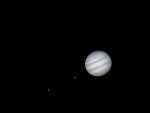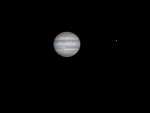Edit 6/2/16:
We've diverged into a wide range of different space related topics outside of interstellar, so I'm changing the prompt and title of the thread from "Interstellar Space Travel" to "Space Discussion Thread". The original topic is still relevant, but feel free to post about anything else space-related.
So far, we've talked about the challenges and demand for FTL, a little bit of astronomy, a little bit of physics, propulsion technology, space suits, terraforming, solar system exploration, colonization, and more.
**Original***********************************************************************
Do you guys think we're ever going to be capable of interstellar space travel? What do you think it'll be like?
Even though space technology has sped up a lot with privatization, I still think we aren't innovating fast enough.
There's a lot of hype about a Martian colony, but it's currently bound to be disappointing for most of us and unreasonable for civilian life. I think that the only way humanity will be able to truly inhabit another planet is to find one that's very similar to Earth, but the only ones are outside our solar system.
Problem is that we're still pretty far from any technology that could get a human to a different solar system within their lifespan.
What do you all think?
*******************************************************************************
[/QU













